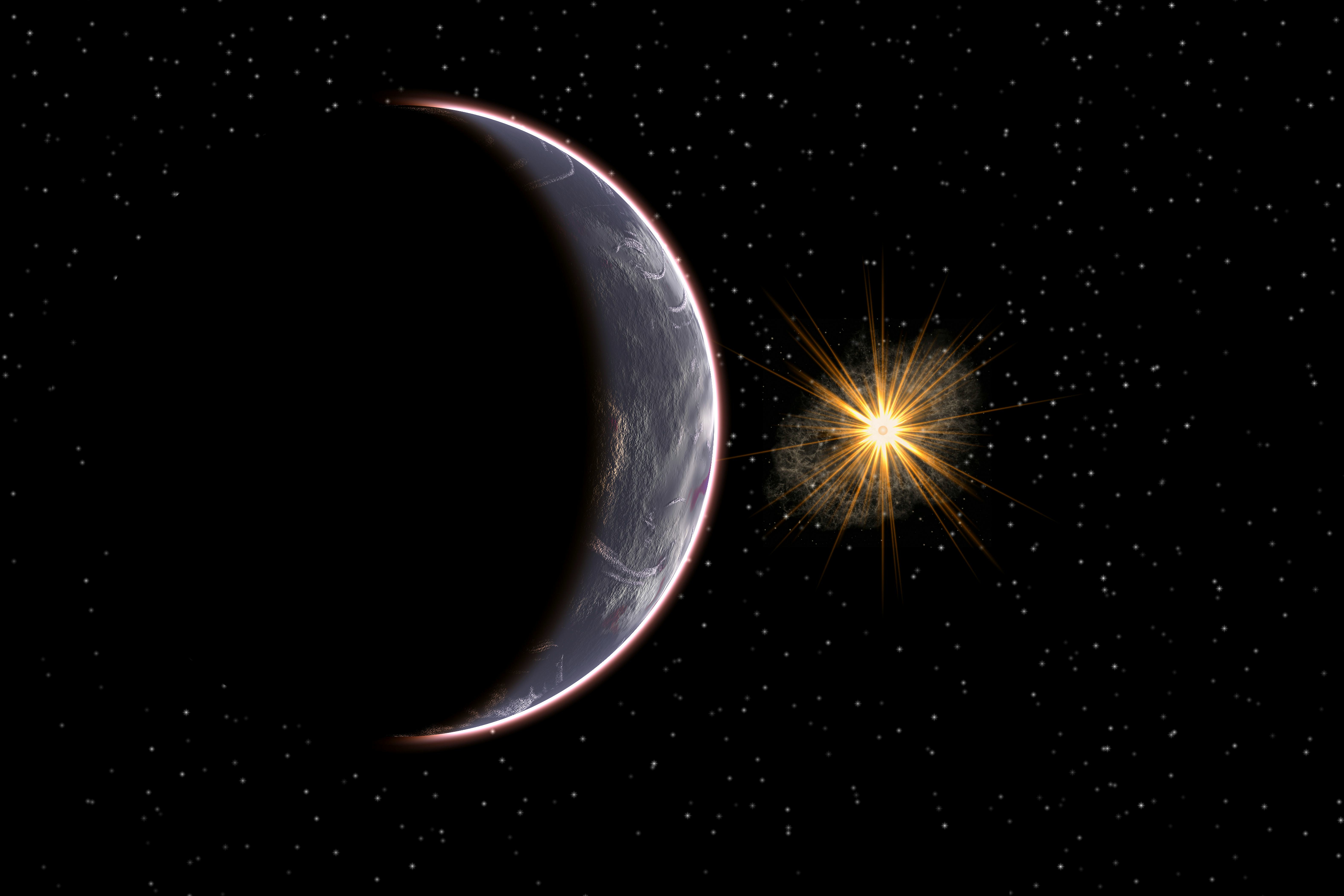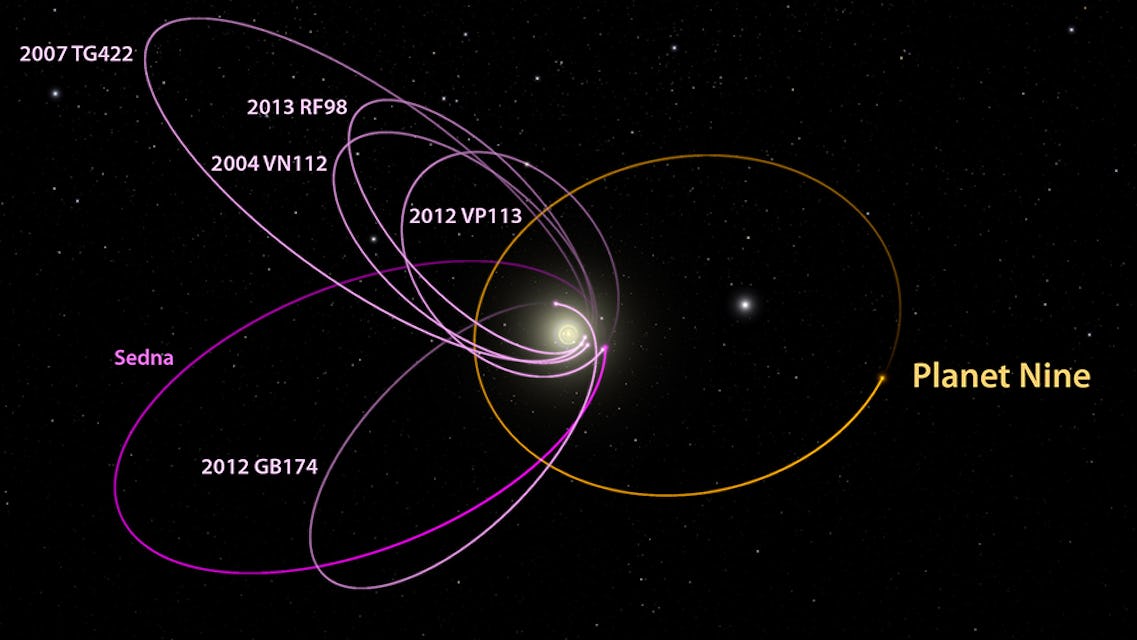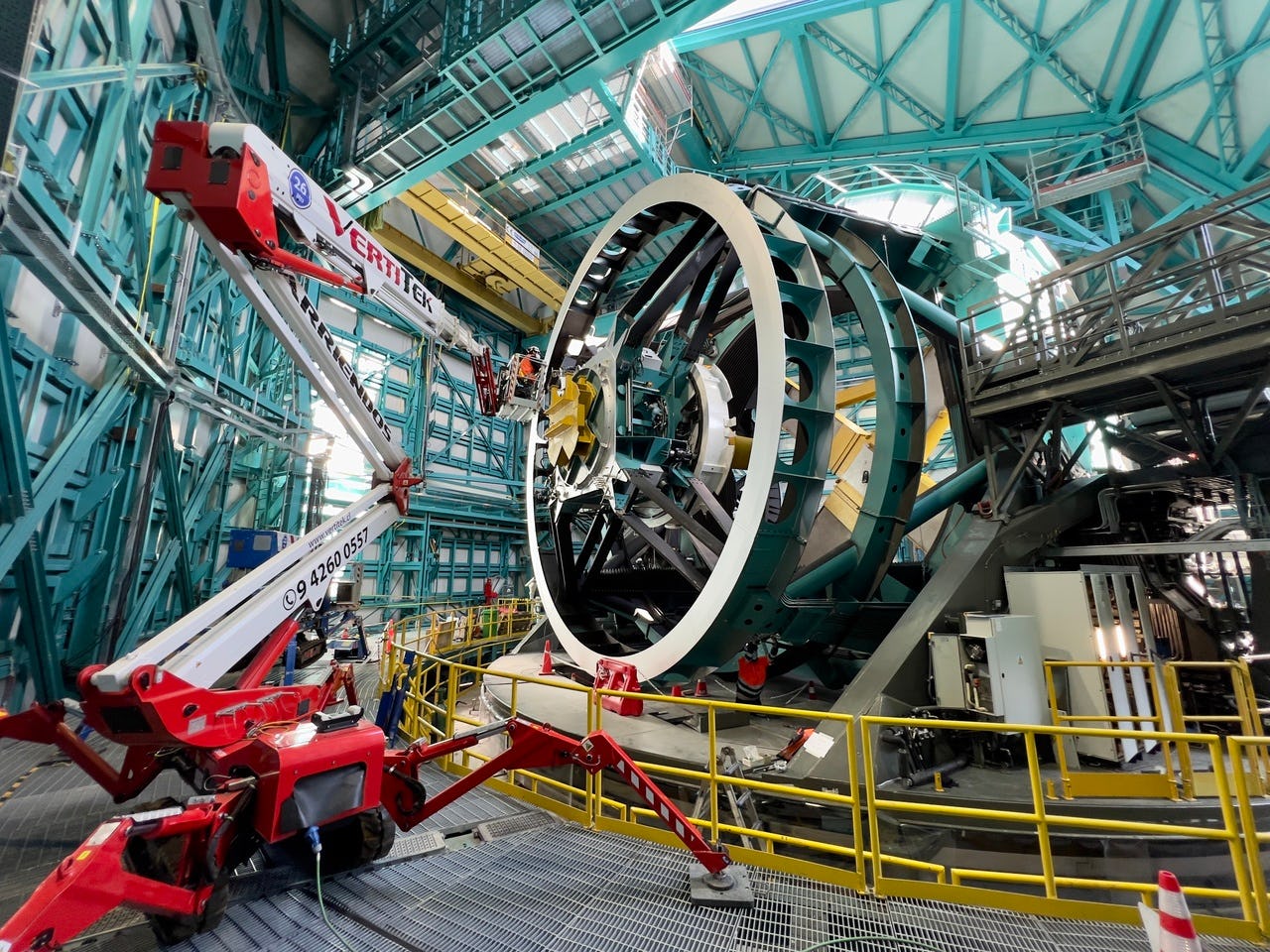
Astronomers know very little about the far outer Solar System — beyond Neptune, Pluto, and the far-flung Kuiper belt. For the past seven years, some scientists have observed certain gravitational anomalies in this mysterious region and have theorized that there must be an undiscovered world, dubbed Planet Nine, lurking at the outer edges of our galactic backyard.
If true, this planet would be unlike any other in the Solar System. At 10 times the size of Earth, it’d take some 10,000 to 20,000 years to orbit the Sun. For comparison, it takes Neptune only 165 years to make the same trip.
But there’s an alternative explanation to these anomalies: some astronomers believe a whole belt of icy bodies, some potentially as large as Earth, could explain this.
Two years from now, the fate of Planet Nine, this new space belt, and other alternative explanations will be tested when the Vera C. Rubin Observatory opens for first light. Perched atop a mountain in central Chile, the observatory will begin its Legacy Survey of Space and Time (LSST) in 2024. Once this next-generation telescope gets to work, it could discover thousands of objects we never knew existed and completely alter everything we know about our Solar System.
Belting out a new possibility — In 2016, Caltech astronomers Mike Brown and Konstantin Batygin hypothesized that some of the head-scratching phenomena occurring in the outer Solar System — especially the strange and extreme orbits of dwarf planets and other icy objects, all pointing toward the same section of space — could be explained by the existence of a ninth planet.
This hypothesized world would have to be about the size of Neptune, and its closest approach to the Sun, or perihelion, would be a staggering 300 AU (the distance between the Earth and the Sun is 1 AU), or about 27.9 billion miles. For comparison, Pluto’s perihelion is only 29.6 AU.

If Planet Nine is real, it wouldn’t be the first planet discovered from the force it exerts on other objects. In 1846, scientists knew another world must be out there due to the anomalies found in Uranus’ orbit. After some elegantly complicated calculations by French astronomer Urbain Le Verrier, Neptune was discovered soon after. Fast forward to the 21st century, and some astronomers think history will repeat itself.
Some … but not all.
“If Planet Nine is real, it would be on such an odd orbit and so far out in the outer Solar System, that it would really challenge our ideas of planet formation and dynamics,” Ann-Marie Madigan, assistant professor of astrophysics at the University of Colorado, Boulder tells Inverse. “There’s nothing normal about this planet.”
That’s why Madigan isn’t searching for just one planet — she’s looking for an entire belt of celestial objects. Like Planet Nine, this proposed Zderic-Madigan, or ZM, belt would be really out there, far beyond the Kuiper belt, with some of its closest bodies being more than twice as far from the Sun as Pluto at perihelion. Unlike the Kuiper belt, this ZM belt tilts off the orbital plane, exhibits orbital clustering, and contains upwards of 10 Earth masses of material — similar to the prediction of Planet Nine’s mass. That’s a lot of unknown debris floating out there, considering the Kuiper belt contains less mass than even one Earth.
Running simulations focused on the gravitational interaction between the bodies in this hypothetical belt, Madigan and her team discovered that their theory explained why some bodies all uniformly orbit around the Sun in such a strange way. Madigan believes that some already-discovered dwarf planets, like Sedna and 2012 VP113, nicknamed Biden (yes, that Biden, who was vice president at the time), are members of this ZM belt. Sedna, for example, has a perihelion of 76 AU and could represent the inner edge of this hypothetical belt. If true, then untold thousands of similar objects are still waiting to be discovered beyond it.
“If you can’t explain how Planet Nine got there, you can’t solve the whole story,” Madigan says
“[With our theory] we understand every step…you don’t need anything new in the Solar System. You just need to take into account the gravity of these small bodies.”
Madigan’s past work with how stars orbit supermassive black holes (like the one found at the center of our galaxy) inspired her to investigate if something similar could be happening on a smaller scale in our Solar System. According to her research, when a stellar disk orbits a supermassive black hole, the gravity between stars causes the disk to become unstable. Stars slowly jump off the orbital plane and begin clustering.
When evidence of strange clustering of orbital bodies in the outer Solar System began to emerge in 2014, Madigan noticed a startling similarity. “This thing I had been studying, about stars orbiting supermassive black holes, they cluster in this exact same way.”
The ZM belt isn’t the only alternative to the Planet Nine mystery. Harvard astronomers think this unexplained gravitational effect could be coming from a primordial black hole about the size of a grapefruit. In contrast, others think all of this is just a problem of a poor sample size and selection bias, suggesting there’s no need for a Planet Nine or any theory whatsoever.
To find out the real answer, astronomers need more evidence — and they’re about to get a whole lot of it.

Eyes to the skies — Although the LSST has several scientific objectives, one of the biggest will be mapping the outer Solar System using its 8.4-meter-wide mirror to locate objects previously undetectable by other telescopes.
For 15 years, Mario Jurić has been working on the Vera C. Rubin Observatory’s LSST project. As the director of the Institute for Data Intensive Research of Astrophysics and Cosmology (DiRAC) at the University of Washington, Jurić and his team focus on observable objects that change positions, whether that’s a black hole eating a supernova or, theoretically, an unseen ninth planet traveling through our Solar System.
“People tend to focus on 30-meter telescopes because they’re big and expensive,” Jurić tells Inverse. “Rubin is here in two years … [and] this thing is going to rewrite textbooks.”
According to Jurić, there are about 4,000 known objects in the outer Solar System. Within the first two years of LSST’s mission, he thinks that number will likely grow to at least 40,000 — even 100,000 objects isn’t out of the question. LSST achieves this impressive mapping ability with high-tech hardware. Most importantly, powerful software capable of sifting through a mind-boggling amount of data and serving up the most significant bits for human astronomers to pore over.
Jurić isn’t necessarily a Planet Nine believer (he jokes that one of his students refers to it as “Planet Nein”), but he’ll follow wherever LSST’s observations lead — Planet Nine, a new ZM belt, or even nothing at all.
“We have this unique telescope that can go really deep and essentially map the Solar System more comprehensively than anything we’ve had before,” Jurić says. “Can we actually use it to confirm, or falsify, these theories that there may be something in the outer Solar System we don’t know about yet?”
According to simulations, the answer is yes. In preparation for the LSST mission, Jurić and his team ran a series of simulations to discover whether this new telescope would detect objects as hypothesized in Madigan’s ZM belt. Considering these objects' size, distance, and reflective surface, the team successfully concluded that LSST would supply strong evidence for — or against — Madigan’s theory.
The strongest support for the ZM belt will be if LSST can find many dwarf planets, Moon-sized bodies, or other icy objects with orbits even bigger than Sedna. If many are found, their existence could suggest that there’s enough mass spread throughout this belt to explain the Solar System’s gravitational anomalies. If very few of these bodies exist, then other explanations, like Planet Nine, become more plausible.
Either way, Jurić is confident that in the first two years of LSST’s operation, we’ll have an answer to what’s really going on out there. “The objects they’re predicting will be imminently detectable by LSST,” he says. “It’s going to be a once-in-a-generation type thing when it comes to Solar System studies.”
LSST will uncover mysteries of the Solar System and how it formed, by painting a more thorough picture of what it looks like today.







